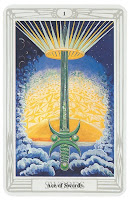Unravelling the Spiritual Tapestry: Core Beliefs and Teachings of the New Church of Swedenborg
Swedenborgianism, a spiritual movement founded upon the revelations of the visionary thinker Emanuel Swedenborg, beckons seekers to explore a realm where the material and spiritual worlds intertwine. Rooted in a unique blend of theology, philosophy, and mysticism, Swedenborgianism offers profound insights into the nature of God, the afterlife, and the purpose of human existence. In this article, we embark on a journey to uncover the core beliefs and teachings that form the essence of Swedenborgian thought.
1. The Divine Unity and the Trinity: At the heart of Swedenborgianism lies a deep understanding of the nature of God. Contrary to the traditional Christian doctrine of a triune God, Swedenborgianism embraces a belief in the unity of God. God is seen as embodying a Divine Trinity in a single person – Father, Son (Jesus Christ), and Holy Spirit – each representing different aspects of the Divine.
2. The Correspondence Principle: A cornerstone of Swedenborg's teachings is the principle of correspondence – the idea that there is a profound relationship between the spiritual and material worlds. According to this principle, everything in the physical realm has a corresponding spiritual counterpart. This belief provides a framework for interpreting sacred texts, nature, and the events of life as symbolic reflections of deeper spiritual truths.
3. Spiritual Regeneration and Salvation: Swedenborgianism places great emphasis on the process of spiritual regeneration – the transformation of an individual's character through a conscious alignment with divine principles. This journey involves self-examination, moral growth, and a deepening connection with God. Salvation, in this context, is viewed as an ongoing process of inner refinement and enlightenment, rather than a one-time event.
4. The Afterlife and the Spiritual Realms: Swedenborg's accounts of his mystical experiences provide vivid descriptions of the afterlife and the various spiritual realms. He described Heaven as a state of inner peace and harmony achieved through a life of love and service, and Hell as a self-imposed exile from divine goodness. The spiritual world, according to Swedenborg, is intricately connected to our earthly existence, and our choices here have lasting implications in the hereafter.
5. The New Church and the Age of Revelation: Swedenborgianism proclaims the emergence of a "New Church," heralding a new era of spiritual enlightenment and revelation. This movement asserts that the insights revealed to Swedenborg are a continuation of divine revelation, providing humanity with deeper insights into God's intentions and the nature of existence.
6. Freedom of Thought and Belief: Swedenborgianism encourages individual exploration, critical thinking, and personal spiritual discovery. It places a strong emphasis on the freedom of thought and belief, allowing adherents to engage with their faith in a way that resonates with their own understanding and experiences.
In the tapestry of Swedenborgianism, we find a rich blend of theology, spirituality, and mysticism that challenges conventional boundaries and beckons us to explore the profound depths of human existence. As we delve into its core beliefs and teachings, we glimpse a spiritual path that invites us to embark on a transformative journey of self-discovery, moral growth, and communion with the divine. In our next installment, we will uncover the intriguing ways in which Swedenborgianism has woven itself into the fabric of art, literature, and culture, leaving an indelible mark on the human story.




Comments
Post a Comment